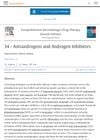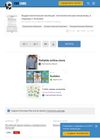Nuclear stack: 2.5mg dutasteride vs 0.5mg dutasteride + topical finasteride/dutasteride/spironolactone for male pattern baldness Research/Science 9/29/2024
The conversation discusses using 2.5mg dutasteride, 0.5mg dutasteride with topical treatments, and other combinations like oral minoxidil, RU58841, and microneedling for male pattern baldness. Users share experiences and suggest various treatment regimens, emphasizing the effectiveness of dutasteride and minoxidil.
View this post in the Community →
Similar Community Posts Join
5 / 1000+ resultscommunity Dutasteride is not maintaining my hair. What are some other good options?
The user is experiencing diffuse hair loss despite using finasteride and dutasteride and is considering adding minoxidil, microneedling, or RU58841. They are also thinking about increasing the dutasteride dose or opting for a hair transplant, while being cautious about side effects.
community Female, 30, PCOS diagnosis, MPB Norwood 2. Endo refuses to give anything other than Spironolactone. Feel like I’m at my wit’s end here.
A 30-year-old female with PCOS and male pattern baldness is frustrated with her endocrinologist's recommendation of only Spironolactone and minoxidil, feeling that dutasteride, finasteride, and progesterone would be more effective. Other users suggest various online sources for treatments, warn against self-medicating due to potential risks, and recommend seeking a specialized endocrinologist or considering additional treatments like Inositol, Berberine, and dermaneedling.
community Switch from fin to dut and its worse
Switching from finasteride to dutasteride can worsen hair loss for some men due to increased testosterone levels. Topical treatments like RU58841 and Pyrilutamide are suggested to counteract these effects, but individual responses vary.
community I don’t know what to do at this point
A 21-year-old woman with female pattern baldness has tried minoxidil, red light therapy, and supplements without success. She is considering spironolactone and seeking medical advice.
community Comprehensive list of Hair loss treatments and your opinion on the best combination to us.
The conversation discusses using oral Minoxidil, topical Minoxidil with RU58841, Finasteride, and serioxyl for hair loss. It also asks for opinions on the effectiveness of other treatments like Setipiprant, Dutasteride, and Spironolactone, and thoughts on HMI-115 and GT20029 trials.
Related Research
6 / 1000+ results
research What's New in the Treatment of Hair Loss?
New treatments for hair loss, like JAK inhibitors, PRP, anti-androgens, and minoxidil, offer better options.

research Antiandrogens and Androgen Inhibitors in Dermatologic Treatments
Antiandrogens and androgen inhibitors like spironolactone, finasteride, and dutasteride can treat hair loss and skin conditions, but they have risks and side effects, including potential harm to pregnant women and risks of cancer and heart issues. Herbal remedies also have antiandrogenic effects but lack safety validation.

research Hair Loss and Herbs for Treatment
Herbs can potentially treat hair loss by inhibiting a key enzyme and promoting hair growth, and deficiencies in zinc, biotin, and iron are linked to hair loss.

research Androgenetic Alopecia: An Update on Pathogenesis and Pharmacological Treatment
Current treatments for androgenetic alopecia are complex and promising, but more research is needed.

research Androgenetic Alopecia: Pathogenetic Mechanisms and Treatment Approaches
Androgenic alopecia, a common hair loss condition, is linked to changes in androgen metabolism and genetics, and can be treated with finasteride and minoxidil, but these treatments are only fully effective in 10% of patients.

research The Role of Androgen and Androgen Receptor in Skin-Related Disorders
Targeting androgen receptors could be a promising way to treat skin disorders with fewer side effects.